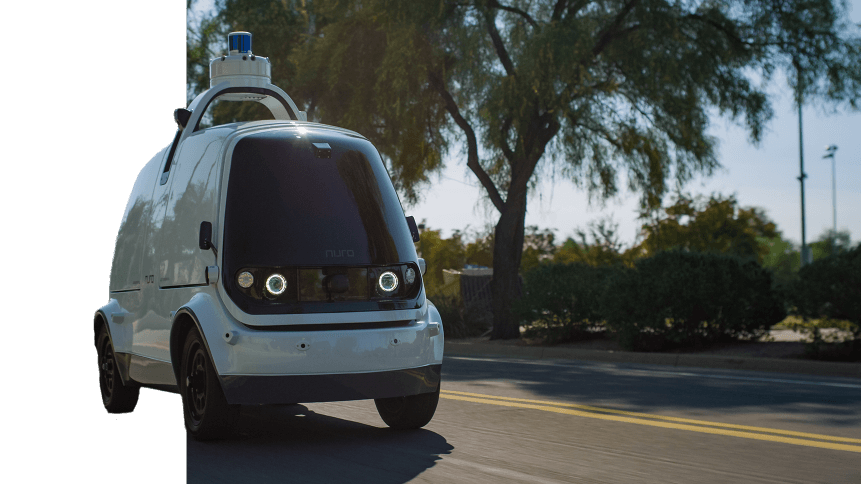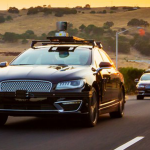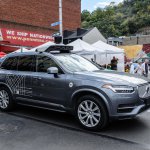Is your business ready for driverless deliveries?

Funding rounds for autonomous vehicles show no signs of dying down and Nuro is the latest self-driving robotic delivery vehicle startup to grab the limelight.
The company has raised a US$940 million investment from Softbank Group Corp’s US$100 billion Vision Fund. The round reportedly gives Nuro a valuation of US$2.7 billion and could put the company on track to corner the autonomous delivery market for a range of retailers.
“We’ve spent the last two and a half years building an amazing team, launching our first unmanned service, working with incredible partners and creating technology to fundamentally improve our daily lives,” said Nuro co-founder, Dave Ferguson.
“This partnership gives us the opportunity to take the next step in realizing our vision for local commerce and the broad application of our technology.
“Nuro’s world-class team has successfully scaled their self-driving technology out of the lab and into the streets,” said Michael Ronen, Managing Partner, SoftBank Investment Advisers.
“In just two years Dave, Jiajun and team have developed Nuro from a concept into a real business using robotics to connect retailers to customers.”
The Nuro story
Founded in 2016 by Dave Ferguson and Jiajun Zhu, former employees of Google’s Alphabet Inc, Nuro is a robotic delivery vehicle startup that is focused on fully-electric vehicles specially made for in-town deliveries.
These vehicles are small with no room for people, and the two side doors reveal specially designed compartments for storing groceries that need to be delivered.
YOU MIGHT LIKE

Aurora investment hints at Amazon driverless ambitions
Nuro has six vehicles so far, but there are plans to enlarge its fleet of standard cars fitted with self-driving hardware and software to about 50, which will operate on public roads in California, Arizona, and Texas with safety operators overseeing them.
Last year, the company announced a partnership with a major U.S. grocer, Kroger. With 2800 stores across 35 states in the U.S., it’s the largest supermarket chain in the world. Through the partnership, customers can place same-day delivery orders through Kroger’s ‘ClickList’ ordering system and Nuro’s application in Scottsdale, Arizona.
According to the WSJ, Nuro is charging US$5.95 for deliveries from Kroger’s Fry’s Food stores in the area.
Last-mile deliveries
A Forrester survey of 4,504 adults found out that almost a third didn’t do more grocery shopping online because of costs including delivery charges. For companies themselves, such as Amazon, disrupting the last-mile delivery market could drastically cut overheads— its annual delivery costs exceeded US$27 billion in 2018.
Speaking to WIRED, Andrew Tipping, of the transportation team at PwC’s Strategy and Consulting, says that last mile delivery is a massively growing business.
“It’s such a big market, I am sure that one of these companies will crack it,” Tipping says.
A Nielsen study also notes that Americans might spend up to US$100 billion yearly on online grocery shopping by 2022.
The Nuro R1 factsheet
- The company’s robot is called ‘R1’, and it travels on the road instead of the sidewalk. The robot can cruise at a maximum speed of 25 miles per hour.
- It has 12 cameras that provide high definition, constant and 360-degree views of the environment from various elevations and with overlapping vantages.
- It has a top mounted LIDAR to provide precise representations of the surrounding area and movements.
- The vehicle has ultrasonics and audio sensors for additional sensing coverage and redundancy and on-board computing power capable of running all aspects of driving onboard.
- All driving and safety-critical systems are redundant, including backups for computing, steering, power, sensing, throttle and braking systems.
- Encryption is used to enable secure remote operations so that malicious software cannot be implanted, including isolating certain components and strictly controlling access for changes to the self-driving software.
- Attackers are resorting to manipulated images to train a computer to misidentify an object, for example, tricking an AI into classifying a stop sign as a yield sign. These attacks are classified as ‘adversarial examples’ and the company is working to address this threat through extensive behavioral validation and other techniques.









